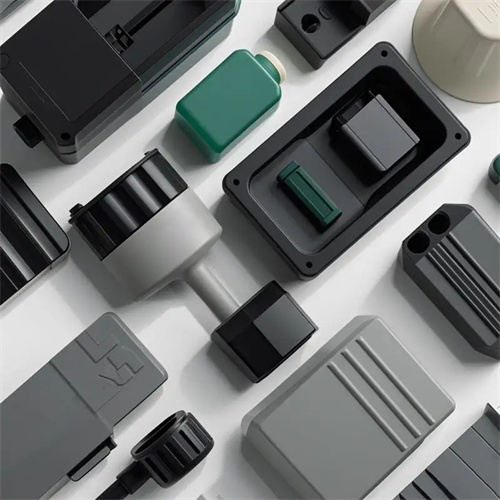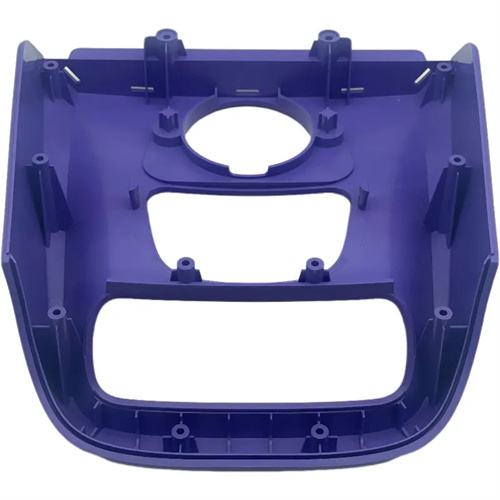The lateral core pulling mechanism of the injection mold is a key device to solve the problem of lateral concave-convex structure or side hole molding of the product. When the product has holes, grooves or bosses that are inconsistent with the mold opening direction, if the lateral core pulling mechanism is not used, the product will not be able to be demolded smoothly and may even be damaged during the demolding process. The design of the lateral core pulling mechanism must take into account factors such as core pulling force, core pulling distance, and movement coordination. Its performance directly affects the molding quality and production efficiency of the product. Common lateral core pulling mechanisms include inclined guide column core pulling, inclined slider core pulling, and gear rack core pulling. Different types of mechanisms are suitable for different product structures and production requirements. For example, the inclined guide column core pulling mechanism has a simple structure and low cost, and is suitable for occasions with small core pulling force and short core pulling distance; while the gear rack core pulling mechanism is suitable for complex products with large core pulling force and long core pulling distance.

The inclined guide pin side core pulling mechanism is one of the most widely used types. It primarily consists of an inclined guide pin, a side core slider, a guide runner, and a wedge block. Its operating principle is to utilize the relative motion between the movable and fixed molds during mold opening. The tilt angle of the inclined guide pin drives the side core slider to move laterally within the guide runner, enabling core extraction. During mold closing, the inclined guide pin is reinserted into the inclined hole of the side core slider, resetting the slider. Simultaneously, the wedge block, under the clamping force, compresses the slider to prevent displacement due to melt pressure during injection. The inclined guide pin’s tilt angle is typically 15°-25°. A larger angle results in insufficient core pulling force, while a smaller angle results in insufficient core pulling distance. The side core slider and guide runner require high precision fit, typically adopting a clearance of H7/f7 to ensure smooth slider movement and prevent binding or loosening. Furthermore, to prevent the slider from shifting after core pulling, a positioning device, such as a stopper or spring pin, is often provided to ensure accurate return to its original position during the next mold closing.

The inclined slider lateral core-pulling mechanism is suitable for applications where the part’s sidewall features shallow concave-convex structures or where integral core pulling is required. It features a compact design and reliable operation. After core pulling, the slider can be ejected from the mold along with the part, simplifying the demolding process. The inclined slider core-pulling mechanism typically consists of an inclined slider, a mold sleeve, and a core. The inclined slider is arranged at an angle along the mold’s parting line, with its bottom contacting the inclined surface of the mold sleeve. During mold opening, the movable mold moves the core downward, and the inclined slider, guided by the inclined surface of the mold sleeve, slides outward, achieving the core-pulling action. Simultaneously, the inclined slider pushes the part away from the core, completing demolding. The inclined slider’s inclination angle is typically 10°-15°, and the core-pulling distance depends on the slider’s length and inclination angle. Because the inclined slider performs both core pulling and demolding during the core-pulling process, its strength and rigidity require rigorous calculation to avoid deformation or damage due to excessive forces. During design, the gaps between the inclined sliders must be uniform to prevent molten material from overflowing into the gaps, forming flash and affecting the product’s appearance.

The rack-and-pinion lateral core-pulling mechanism is suitable for complex products requiring high core-pulling forces, long core-pulling distances, or simultaneous core-pulling in multiple directions. The meshing transmission of the rack and pinion converts the linear motion of the mold opening into lateral movement of the side core, resulting in smooth core-pulling and high core-pulling force. The mechanism primarily consists of a rack, pinion, side core, and guide mechanism. The rack is typically fixed to the fixed or movable mold, while the pinion is connected to the side core and can rotate about a fixed axis. During mold opening, the rack moves with the fixed or movable mold, driving the pinion to rotate, thereby pulling the side core laterally. During mold closing, the rack moves in the opposite direction, and the pinion reverses, resetting the side core. The module and number of teeth of the rack and pinion are determined based on the core-pulling force and distance. Guides and positioning devices are typically incorporated to ensure smooth transmission. Furthermore, due to the presence of backlash in the rack-and-pinion transmission, backlash reduction measures, such as dual pinion or spring backlash reduction, are required during design to prevent inaccurate positioning of the side core, which could affect the dimensional accuracy of the product.

The design of the lateral core-pulling mechanism also needs to consider coordination with other mold mechanisms to ensure synchronization and reliability. For example, in molds employing lateral core-pulling mechanisms, the mold opening sequence must be appropriately set to ensure that the lateral core-pulling action is completed before the main parting surface opens, or that the core-pulling action is performed after the main parting surface opens a certain distance to avoid interference between the mechanisms. For molds with multiple lateral core-pulling mechanisms, sequential parting mechanisms or linkage mechanisms are required to ensure the orderly execution of each core-pulling action to prevent conflicts. Furthermore, the reset of the lateral core-pulling mechanism must be accurate and reliable. This can be controlled by devices such as limit blocks and travel switches to ensure that the lateral core returns to the precise position when the mold is closed. In actual production, failure of the lateral core-pulling mechanism often results in scrapped products or mold damage. Therefore, after the design is completed, thorough motion simulation and mold trial verification are required to optimize and improve potential problems such as sticking and inaccurate reset to improve the reliability and service life of the mold.
